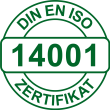Moulded parts
Guide rings made of POM | Application: cylinder construction
Moulded parts – from prototype to series
One of our core competences is the support of our customers from the first prototypes to the serial part. If a moulded part is the best option for economic or manufacturing reasons, we have various options for developing the optimal solution.
For moulded parts in large quantities, we draw on the expertise of our qualified partners. Together with our customers, we develop the optimal moulded part, take over the initial sampling and qualify the perfect series part.
For medium quantities, we develop cost-effective tools made of high-strength aluminum in our own toolmaking shop using a modular system. Due to our flexible production, we have the possibility to produce moulded parts in a very short time on our own injection moulding machines.
For small quantities, vacuum casting is a very good alternative. Especially for components made of elastomers, where machining is no longer possible due to insufficient shore hardness or geometric complexity, it can be used to produce usable components made of polyurethane.
Modular system for cost-effective tools
If the expected number of pieces does not reach the usual size for a moulded part, there is an intermediate solution. Moulds are CNC machined from a high-strength aluminum alloy and positioned in a standard mould frame. By recycling most of the components, the cost of the mould is significantly reduced and can be realized within a very short time.
The production of several thousand components is possible with these unhardened tools in high component quality and is especially advantageous in the product development phase. These tool inserts can be changed relatively easily in a short time, and different variants can be tested in parallel.
Standard products produced in this way are, for example, guide rings made of POM for hydraulic cylinders. Here, a mould contains several dimensions, and a positioning insert is used to release the sprue for the respective guide element. This solution is therefore very cost-effective and allows these moulded parts to be produced economically even in manageable quantities.
Vacuum casting for usable molded parts
The vacuum casting process is suitable for moulded parts in small quantities. Here, the positive is produced using the additive manufacturing process and a silicone mould is made from it. The finished component is then produced in this silicone mould under vacuum using polyurethane vacuum casting resin. The silicone mould can be used to produce up to 20 components before it has to be replaced.
If larger quantities are required, the mould can also be CNC machined from aluminum if the complexity of the component allows. The polyurethane vacuum casting resin allows a Shore A hardness between 35 and 95. In addition, components can also be made from liquid silicone with a Shore A hardness between 30 and 59.
The vacuum casting components are not only suitable for prototypes before a series tool is created, but can actually be used for various applications.

Various vacuum castings made of PU | Application: First series in plant engineering and construction
Applications for vacuum casting components
Complex housing seals
Some complex geometries are necessary for the sealing of cases, which can only be produced by means of moulding manufacturing processes. However, if the planned quantities are small, the production of a conventional mould is not economical.
In addition, more complex geometries are possible using vacuum casting, since the positive can be produced using additive manufacturing.
Seals for test stands
Essential for leakage tests of die-cast or injection-moulded parts, complex sealing geometries are required onto which the component to be tested is pressed.
The seals produced by vacuum casting can be derived and manufactured from the 3D CAD data with little effort and in a very short time.
Spare parts in case of loss of the series tool
When inspecting older equipment, the procurement of spare parts made of elastomers is often a problem because the series tool is no longer available.
Wiper components or seals can be produced very cost-effectively using the vacuum casting process based on the samples.
Development parts
In the development phase, development times and costs can be significantly reduced by using components in the vacuum casting process for testing. Even if the exact series material is not available, most functions can still be fulfilled.


